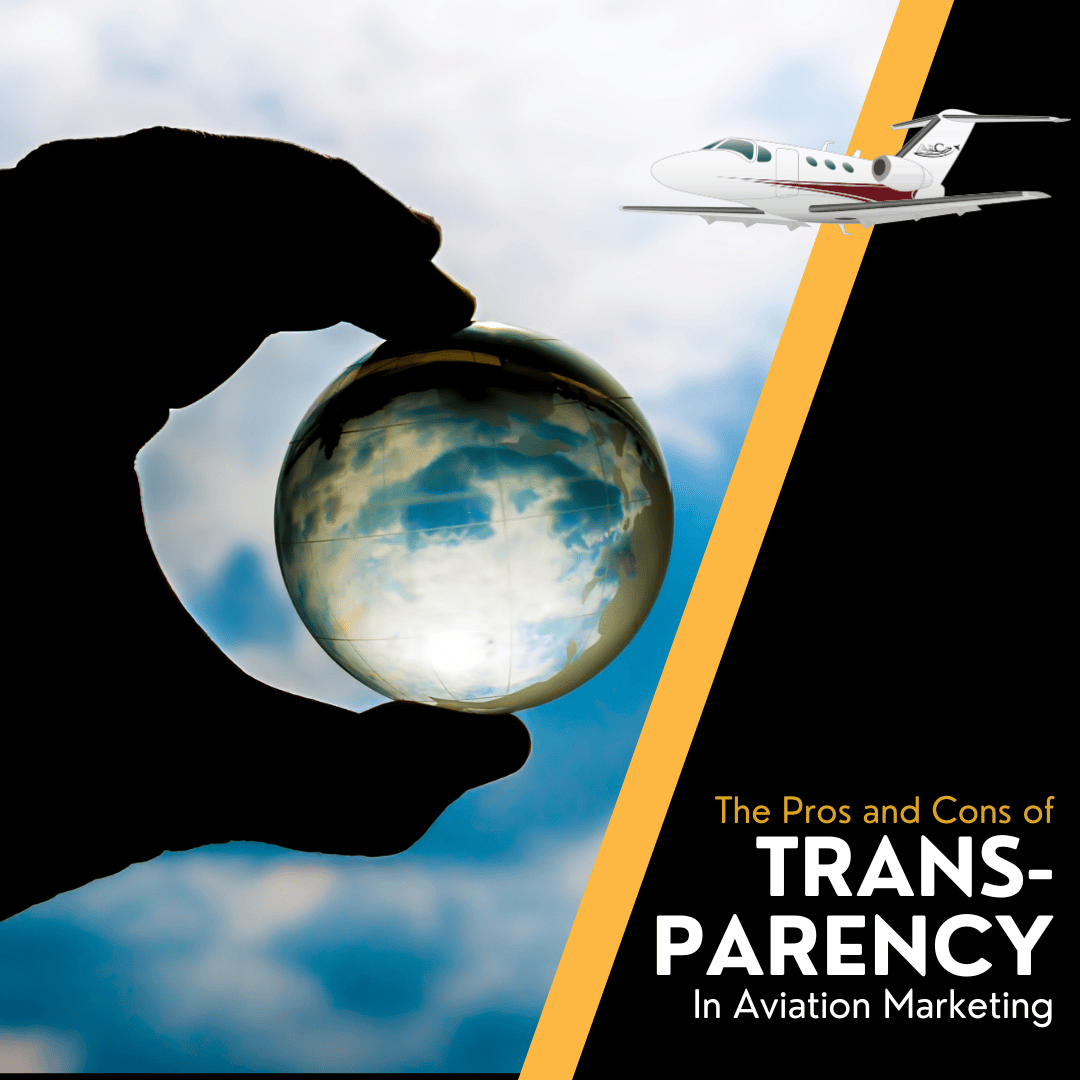[embedyt] https://www.youtube.com/watch?v=-u5kKToy7jY[/embedyt]
[smart_track_player url=”http://traffic.libsyn.com/aviationmarketing/Reputation_Management_Case_Study_Episode_.mp3″ background=”default” ]
Paula Williams: Welcome to this week’s episode. This time we’re actually doing a case study of our aviation reputation management service, which is a new service we just started offering in October.
John Williams: Yes.
Paula Williams: In October, actually-
John Williams: October.
Paula Williams: Gone by real fast. October’s not even over yet. In fact, we were running this sort of special for people who want to try it in October, and get us some results and we now have some results-
John Williams: Some results.
Aviation Reputation Management – A Case Study
Paula Williams: Right. So, aviation reputation management, a case study. We have a brave and fabulous client. All of our clients are brave and fabulous, but this one is braver and more fabulous than most to try a new service and let us know what they thought, and carry on from there.
John Williams: So, what did they think?
Paula Williams: I think they’re pretty happy.
John Williams: Well good.
 Paula Williams: You know, we don’t have even 30 days worth of results but we’ll show you what that is. So, aviation reputation management. This episode is being brought to you by this product of course. And it’s a new product that we’re offering to help aviation companies overcome some of the obstacles that come from not having a huge audience. So, the ones that we do have, the customers that we do have are incredibly influential, right?
Paula Williams: You know, we don’t have even 30 days worth of results but we’ll show you what that is. So, aviation reputation management. This episode is being brought to you by this product of course. And it’s a new product that we’re offering to help aviation companies overcome some of the obstacles that come from not having a huge audience. So, the ones that we do have, the customers that we do have are incredibly influential, right?
John Williams: Yes.
Paula Williams: So, crazy things can happen and it can be difficult to overcome. All right, so we’ve talked in the last few episodes about how bad reviews can kill you. And we talked about some statistics and things from restaurants in San Francisco, restaurants with a 2.5 star rating out of five were 25% more likely to close. Restaurants with 4.5s to five stars, the risk increase dropped to 0%. So, in other words, if you have 4.5 or five stars, you’re going to stay in business. If you have 2.5 stars or less, chances are you’re not doing too well. That’s great if you’re a restaurant in San Francisco, but what if you’ve an aviation company?
John Williams: Yeah, and there’s fewer of them around.
Paula Williams: Exactly. So, it’s harder to get data and there aren’t good studies, so sometimes we have to take data from where we can and extrapolate and-
John Williams: We did that.
Aerostar Type Ratings- A Fantastic Flight School
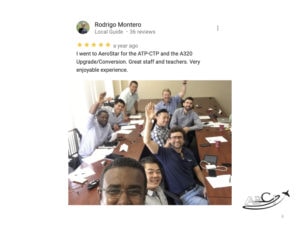 Paula Williams: We did that, right? Okay. So, let’s talk about aviation now. Everything else we talk about is going to be about a fabulous client that we have, AeroStar, type ratings. They’re a client we’ve had for a really, really long time doing other things for them. Content marketing, articles, brochures, catalogs, all kinds of different things. But, one thing we have never done for them really, that we’ve never focused on them, focused on for them is getting reviews. So, when they did get reviews over the last number of years since about 2010 when Google started posting reviews with its results, with its search results, they’ve gotten a few results here and there.
Paula Williams: We did that, right? Okay. So, let’s talk about aviation now. Everything else we talk about is going to be about a fabulous client that we have, AeroStar, type ratings. They’re a client we’ve had for a really, really long time doing other things for them. Content marketing, articles, brochures, catalogs, all kinds of different things. But, one thing we have never done for them really, that we’ve never focused on them, focused on for them is getting reviews. So, when they did get reviews over the last number of years since about 2010 when Google started posting reviews with its results, with its search results, they’ve gotten a few results here and there.
This is a review from a year ago that was pretty typical of how people feel about AeroStar. Great staff and teachers, very enjoyable experience. You can see they’re very engaged. They submitted a picture, which is fantastic. People have been really positive and supportive of AeroStar as they should be because it’s a great school with fantastic teachers, right?
John Williams: Yeah.
Level D Sims – And Murphy’s Law
Paula Williams: Okay. That’s wonderful. But, in even the best aviation company, things can happen. And if you’re familiar with the Level D simulator … This is a Level D simulator. You can see, there are a lot of moving parts. This is basically a suspended room, right? Suspended in the air, and it’s on these hydraulic jacks or stilts or whatever you want to call them, legs, that simulate motion. So, there’s a lot of things that could go wrong with this. There’s a lot of avionics inside. A lot of screens, a lot of software.
These things, when they’re installed, they have to be calibrated and inspected by the FAA and certificated that they are accurate to the experience that someone would actually have in a 737.
John Williams: Yeah, I mean, after the dang thing’s been purchased and then installed, it takes a year to get it … what’s the word?
Paula Williams: Certificated?
John Williams: Yeah, certificated.
Paula Williams: Which is a weird word. You think certified but they call it certificated-
John Williams: Right, either way, right, right.
Things Can Go Wrong – This is Aviation!
Paula Williams: Yeah. Anyway, the point is, this is not a trivial piece of hardware. This is something that is incredibly expensive, very difficult to replace if something goes wrong. And unfortunately, something, as Murphy’s Law states … Murphy’s Law came from aviation, by the way.
John Williams: Yes, it did. Captain Ron Murphy, US Air Force.
 Paula Williams: Mm-hmm (affirmative). If something can go wrong, it will go wrong. And unfortunately, in this case, you can see when something went wrong with AeroStar’s simulator, things went wrong with their reviews. So, you think about this.
Paula Williams: Mm-hmm (affirmative). If something can go wrong, it will go wrong. And unfortunately, in this case, you can see when something went wrong with AeroStar’s simulator, things went wrong with their reviews. So, you think about this.
You’ve got a class of people from out of state or out of country who have traveled a long way. Class of 30 or 40 people, I don’t know how many are exactly in a class. But anyway, 30 or 40 people who are living together in a hotel or I think it’s a hotel that they put people up in, and the simulator goes out. And this was a weather-related, lightning-related event. But it’s not like they can just order another simulator and install it overnight and keep going, right?
John Williams: Yeah, it takes a lot of troubleshooting to figure out how many components were damaged.
Paula Williams: Exactly.
John Williams: And once you start replacing components, you don’t just go to the local hardware store and pick them up.
Paula Williams: Exactly. So, you can see 2010 through 2019, AeroStar, who was not really pursuing getting reviews, these were just all kind of accidental, they got 14 reviews. 14 five star reviews; one that was anything between one and five stars, and I think it was a four and a half or something like that; and zero one star reviews. That’s one thing that’s really interesting about reviews. Nobody leaves mediocre reviews. They’re not going to take the time and energy to do a review unless they’re either very happy or very unhappy. So, we’ve got nine years in which 14 people happened to be thrilled and happened to be inspired and happened to know how to leave a review, and did, you know?
John Williams: Yeah.
 Paula Williams: Okay. And then in one month, when that simulator went out, things just went crazy. So you’ve got a bunch of people who are very intelligent and very frustrated, and very unhappy, sitting around thinking, “What can I do about this because the simulator went out? I have to call and explain to my employer and my family and everybody else why my class is being delayed, and why I’m not able to finish this course on time.” So, they’re really unhappy and they have nothing better to do than to get on Google and to write one star reviews, and to like each other’s one star reviews and to be inspired by each other’s reviews and try to top each other with how bad the situation is, right?
Paula Williams: Okay. And then in one month, when that simulator went out, things just went crazy. So you’ve got a bunch of people who are very intelligent and very frustrated, and very unhappy, sitting around thinking, “What can I do about this because the simulator went out? I have to call and explain to my employer and my family and everybody else why my class is being delayed, and why I’m not able to finish this course on time.” So, they’re really unhappy and they have nothing better to do than to get on Google and to write one star reviews, and to like each other’s one star reviews and to be inspired by each other’s reviews and try to top each other with how bad the situation is, right?
John Williams: Never mind that they’re going … The military phrase, I almost said … They were working very hard-
Paula Williams: Right.
John Williams: To get this thing up to speed. They had people all over it. Parts coming in. Testing. And then they’d keep finding another component that was bad. I mean, you know, lightning can be a pretty bad thing with all the electronics in there. So, they were working as fast as they could, round the clock, to put it together.
Paula Williams: And can’t always give perfect updates of, “We know exactly what it’s going to take to fix it, and it’s going to be fixed next Thursday and …”
John Williams: Because they don’t know.
Paula Williams: Yeah, exactly. It’s like getting your car fixed except a thousand times worse because there are very few people that work on these things, and very few places you can get parts.
John Williams: I can give you an example about a car.
Paula Williams: Okay.
John Williams: My car overheated. It’s designed not to do that.
Paula Williams: Mm-hmm (affirmative).
John Williams: And, I mean, when we’re in 120 degree weather, and I’ve got to go inside to get a bottle of water or something, I leave the car running to keep the car cool. It didn’t. So, took it to the mechanic.
Paula Williams: Mm-hmm (affirmative). A good mechanic.
John Williams: A good, yeah. Mechanic that’s actually worked on this model car since its inception, and he said, “Oh, I think I know what the problem is.” So, they did that, they did some testing and I went back out and it overheated again. I took it back.
Paula Williams: Yep.
John Williams: This is over about a month.
Paula Williams: Yeah.
John Williams: Because it was intermittent. It would not do it on command.
Paula Williams: Right.
John Williams: So, I took it back four times-
Paula Williams: Over the course of a month.
John Williams: Yeah. And the last time, the guy shows, he says, “This is going to be expensive, but I guarantee, it’s going to fix the problem. Matter of fact, I will guarantee it and I will pay you back the money if it does not fix it.”
Paula Williams: Nobody does that.
John Williams: Nobody does that. Mechanics just don’t do that. But he did that, and in the presence of several witnesses, and he fixed it.
Paula Williams: Right.
John Williams: But again, it took that time of troubleshooting because it’s intermittent.
A Disproportionate Effect
Paula Williams: Yeah.
 John Williams: And I can tell you from experience of having troubleshot electronics in a previous life, you don’t always figure it out on the first time.
John Williams: And I can tell you from experience of having troubleshot electronics in a previous life, you don’t always figure it out on the first time.
Paula Williams: Right. So, of the thousands of classes that AeroStar has taught over the years, this is one class of people, you know, 20 or 30 people who are having a bad experience. They totally shape the perception of what people see on Google. This is the world we live in nowadays. The minority can have a huge out-sized influence on the way things look to somebody who is not paying much attention. So, there’s a lot of things going on here, and of course, AeroStar is doing their best to respond to the bad reviews as they happen but they were kind of caught off guard because they’ve never sought out reviews, they’ve never really, you know, they’ve been of the opinion, as are a lot of aviation companies, “We are just going to do our job. We are going to do our darnedest. People will understand if something goes wrong. And nothing will ever go wrong, of course. And we’re going to do our best to just make sure that we do a darned good job, and the reviews will take care of themselves.”
Paula Williams: Great, so far as it goes. But this is the world that we live in. So, anyway, AeroStar, and we, decided we should start doing reputation management for them. And of course, they had some concerns to start with.
John Williams: You think?
Concerns about Reputation Management
Paula Williams: As does everybody. Number one is, of course, we do not want to draw attention to our online reviews now when they’re not representative of what we’ve done. Like I said, of the thousands of classes we taught, most people are thrilled. Now is not the time to be drawing attention to Google and having people go look at our reviews.
John Williams: Accept that.
Paula Williams: Right. Number two, is there something cheap or dishonest about asking for reviews?
John Williams: No.
Paula Williams: Well, that’s a concern that a lot of people have, so-
John Williams: Well, yeah.
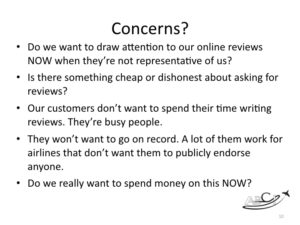 Paula Williams: We want to make sure that we honor that, and that we understand where they’re coming from. Our customers don’t want to spend their time writing reviews because they’re busy people. And I think most aviation companies feel that way. They feel like, “Well, I’m just taking more time from our customers. I am just upsetting them, when I want them to be happy. That’s my whole goal in life is to make sure that they are happy and satisfied, not to take up more of their time.” They want to go on record. A lot of them work for airlines that don’t want them to publicly endorse anyone. That is another issue that we have in the aviation industry. A lot of people are afraid to ask for reviews because they are afraid that people have so much confidentiality and other things that they need to honor that nobody’s going to be able to give them a review under any circumstances. I’m going to tell you how we address all these concerns, obviously, but first of all we wanted to get them all out on the table, right?
Paula Williams: We want to make sure that we honor that, and that we understand where they’re coming from. Our customers don’t want to spend their time writing reviews because they’re busy people. And I think most aviation companies feel that way. They feel like, “Well, I’m just taking more time from our customers. I am just upsetting them, when I want them to be happy. That’s my whole goal in life is to make sure that they are happy and satisfied, not to take up more of their time.” They want to go on record. A lot of them work for airlines that don’t want them to publicly endorse anyone. That is another issue that we have in the aviation industry. A lot of people are afraid to ask for reviews because they are afraid that people have so much confidentiality and other things that they need to honor that nobody’s going to be able to give them a review under any circumstances. I’m going to tell you how we address all these concerns, obviously, but first of all we wanted to get them all out on the table, right?
John Williams: Mm-hmm (affirmative).
 Paula Williams: Okay. Do we really want to spend money on this now? We just spent a bunch of money getting our sim repaired. We have to make this right with all these folks. There’s a lot of things going on. This is not maybe the best time. Maybe our sales are down because of these bad reviews. Lots of things are happening that maybe this isn’t the best time to start shelling out more money to do something about this problem, right? But, to their credit, I have to say, this is one of our bravest customers. They did not do this. They did not stick their head in the sand. They did not just run away from the problem and hope that it solved itself. In fact, this is one of our favorite groups of people. Deidra and Robin and Dave Santo and Robin Frey, I already mentioned her, and Jerry Lee, they are really, really cool people and very good at what they do and very smart and very brave.
Paula Williams: Okay. Do we really want to spend money on this now? We just spent a bunch of money getting our sim repaired. We have to make this right with all these folks. There’s a lot of things going on. This is not maybe the best time. Maybe our sales are down because of these bad reviews. Lots of things are happening that maybe this isn’t the best time to start shelling out more money to do something about this problem, right? But, to their credit, I have to say, this is one of our bravest customers. They did not do this. They did not stick their head in the sand. They did not just run away from the problem and hope that it solved itself. In fact, this is one of our favorite groups of people. Deidra and Robin and Dave Santo and Robin Frey, I already mentioned her, and Jerry Lee, they are really, really cool people and very good at what they do and very smart and very brave.
John Williams: Mm-hmm (affirmative).
Paula Williams: Okay. So, here’s what we did. We took their average rating, and what’s interesting is when people are not solicited for reviews, typically they only do it when they’re unhappy, right?
John Williams: True.
Paula Williams: The only time we’re ever really inspired to leave a review is when we’re unhappy with something, right?
John Williams: Right.
Paula Williams: Or when somebody goes way over the top, but more often, it’s because of a problem that we want to warn other people about it. So, the problem is this is what shows up on Googles results when someone goes and looks at AeroStar. So, if we raise that average, it’s going to make their whole company look better when people look them up on Google, right?
John Williams: Mm-hmm (affirmative).
Determining the Strategy -Where Will Online Reviews Do the Most Good?
Paula Williams: Okay. So, we did three things, and we actually have software that helps us do this, but of course there is some work on our side, setting it up and making it personalized and perfect.
 Paula Williams: So, we decided to focus on Google because that is the place that the visibility is the most impacted by this event. We sent out an email broadcast to about 100 people. We were picking people from their list that are the most engaged, and the most likely to respond. And actually, this is just something we just spent a few days on really. We haven’t spent much time on this at all. So, this is an email broadcast that went out to just a few of their customers. Thanks for choosing AeroStar. I’d like to personally invite you to share your experience. Your feedback not only helps us, but it helps other potential customers. It only takes a moment and it would mean the world to us. Review us now.
Paula Williams: So, we decided to focus on Google because that is the place that the visibility is the most impacted by this event. We sent out an email broadcast to about 100 people. We were picking people from their list that are the most engaged, and the most likely to respond. And actually, this is just something we just spent a few days on really. We haven’t spent much time on this at all. So, this is an email broadcast that went out to just a few of their customers. Thanks for choosing AeroStar. I’d like to personally invite you to share your experience. Your feedback not only helps us, but it helps other potential customers. It only takes a moment and it would mean the world to us. Review us now.
Email Broadcast
Or, go to this link, you know, if they don’t feel comfortable pushing a button in an email, which some people aren’t nowadays, giving them an alternative and a way to do that, and also, a way to unsubscribe if they’ve already left us a review, that’s always possible that they left it with initials or we have no idea who they are, whatever. So, that being sent to representative sample of their customers, right?
John Williams: Mm-hmm (affirmative).
Email Signature Widgets
 Paula Williams: Okay. That’s thing number one. Thing number two is we have them add this to their email signature, and this is my email signature. This is not one of theirs. But, what it is is this little widget at the bottom of the email signature, “How did we do?” And, “Click to rate your experience.” Right? And that goes out for all of their salespeople, customer service folks, other folks. You know, they put that in the bottom of their email, that makes it more likely that people find it easy to leave a review.
Paula Williams: Okay. That’s thing number one. Thing number two is we have them add this to their email signature, and this is my email signature. This is not one of theirs. But, what it is is this little widget at the bottom of the email signature, “How did we do?” And, “Click to rate your experience.” Right? And that goes out for all of their salespeople, customer service folks, other folks. You know, they put that in the bottom of their email, that makes it more likely that people find it easy to leave a review.
Web Site Review Carousel
And third thing is website widgets. So on their website, once again, at the bottom of several of their pages, we’ve got this, “How did we do? Click to rate your experience.” What’s interesting is when you click that button, it doesn’t go directly to the review site. It goes to software that we’re working with that based on their selection, you know, if they choose five or four stars, it’s going to ask them … It’s going to say, “Thank you for your review. Would you mind leaving us a detailed review on Google?” As an example. And that’s the one we’re using for AeroStar because we want to correct for what might be a misconception on people’s part because of this out-sized event that happened, right?
John Williams: Mm-hmm (affirmative).
Paula Williams: Okay. If it is a three star or fewer review in the software, then rather than taking them to Google where they can do more damage, it’s going to say, you know, it’s going to have a totally different branch and say, “I’m really sorry about that. Let me get back to you as soon as I can about this and let’s see if we can make it right.” So, it’s just basically giving you another chance. There’s nothing dishonest about this, I don’t think, to have another chance to fix the problem. That helps the customer and it helps you.
John Williams: Presuppose that you respond in a timely manner to said review.
Paula Williams: Exactly. It’s not going to prevent them from leaving a bad review, but it’s certainly not going to help them either.
John Williams: No.
Paula Williams: It’s not going to make it easy for them but it is going to make it easy for you to get into their problem and solve it and give you another chance to solve a problem that you may not have known about.
John Williams: Exactly.
Paula Williams: All right. So, after doing this for … It is now October 17th, and we started this on October 4th-
John Williams: Right. Two weeks almost.
 Paula Williams: Yeah, exactly. You can see that we’re getting a lot more of those positive reviews, and again, very few of those anything in between, and none of those negative ones since we started this program. So, this is not going to prevent them from leaving a negative review if somebody has a bad experience. So this is not for bad companies, and we’ll talk about that in a minute. But, if you are a good company that had an anomaly, this fantastic. This is the best solution that I have seen. I really love helping good companies represent themselves accurately-
Paula Williams: Yeah, exactly. You can see that we’re getting a lot more of those positive reviews, and again, very few of those anything in between, and none of those negative ones since we started this program. So, this is not going to prevent them from leaving a negative review if somebody has a bad experience. So this is not for bad companies, and we’ll talk about that in a minute. But, if you are a good company that had an anomaly, this fantastic. This is the best solution that I have seen. I really love helping good companies represent themselves accurately-
John Williams: Exactly.
Paula Williams: And that really is what this does. So, this is helping the overall from this, you know, some ways we can present the best possible fact. You can see on Yelp things are going up already to a 3.5, and in some cases, it’s up to a five already. So, those are much better results. It’s going to take a while, obviously, to get the total up-
John Williams: Sure.
Paula Williams: But, the best defense against negative reviews is more positive ones because the recency of those is going to push those down. If somebody looks at the sheet of reviews, they’re going to see, “Oh, wow, all of their bad reviews are concentrated on one month.” And that’s exactly the picture that we want to show. And that makes it a whole lot easier, especially for their salespeople to explain this if somebody says, “Wow, I’m looking at you and three other schools, and they’ve got maybe fewer reviews but they’ve got fewer bad ones as well.” And then a salesperson can say, “Yeah, we had an equipment problem in August. It’s the first time that’s happened in so many years of business, and we’re doing this to make sure it doesn’t happen again.”
Reputation Management is NOT For You If . . .
John Williams: Exactly.
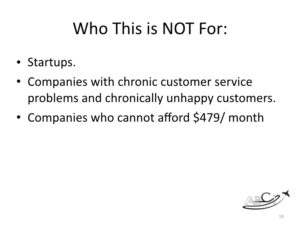 Paula Williams: All of those things are much easier to deal with. Okay, so this is not for startups. If you have no customers, we can get you no honest reviews, right? Okay. And also, if you’re a startup, you’ve got a million things to spend money on and this is so far down the list that it’s not worth considering. That’s one thing. Second is companies with chronic customer service problems, or chronically unhappy customers. You need to fix your company before you can fix your marketing.
Paula Williams: All of those things are much easier to deal with. Okay, so this is not for startups. If you have no customers, we can get you no honest reviews, right? Okay. And also, if you’re a startup, you’ve got a million things to spend money on and this is so far down the list that it’s not worth considering. That’s one thing. Second is companies with chronic customer service problems, or chronically unhappy customers. You need to fix your company before you can fix your marketing.
John Williams: You mean like our internet service provider?
Paula Williams: Oh my gosh.
John Williams: Any way-
Paula Williams: So, yeah, fix your company, and then we can help you. We can’t do anything dishonest or magical if your customers are unhappy. So, that’s another thing. And then the third thing is companies that cannot afford $479 a month. That’s the retail price of this product. And when you think about it, $500 a month would buy you a very small ad in a very small publication-
John Williams: Once.
Paula Williams: Once. This actually gives you material that you could use in multiple different places-
John Williams: Right-
Paula Williams: And also people find this a thousand times more credible than any advertising that you can buy. So, I really think this is the best way to spend $500 on marketing if you are in a situation where you do have happy customers that we could-
John Williams: And this builds on itself too, so-
Paula Williams: Exactly. And you can do this yourself. You know? You don’t necessarily need to use us or our software. It just makes it a thousand times easier and if we’re talking the numbers we’re talking, there’s no way we could get that results in that amount of time unless you devote a full-time person-
John Williams: Right-
Paula Williams: To that, and that’s going to cost you more than $500.
John Williams: Exactly.
Paula Williams: Exactly, in your time.
The Ideal Candidate for Reputation Management
Okay, so who this is for good aviation companies with a healthy customer list, preferably those that have been in business for a while and have some customers that we can talk to, right? And, also, companies who have a good record. Companies that have a great product or service. So, once again, we can’t help you if you are not in that category.
So, the benefits of our reputation management program. Positive reviews are more credible than any advertisement you can buy. Positive reviews are public information. They are putting this out on Google and so, they are yours to use in your marketing materials, your brochures, your videos, anything that you produce. Any marketing materials that you produce from that day forward, should have at least one testimonial in them.
John Williams: Of course.
Paula Williams: There’s no reason not to use what you’ve got.
John Williams: Which makes your $479 a month investment even more valuable.
The Benefits of Reputation Management
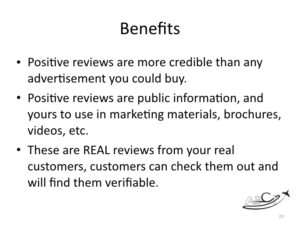 Paula Williams: Exactly. And also, we have some different features that will automatically post your positive reviews on your social media on random. It will also post them on your website at random and do some things like that so that you’re making more visibility from those things. And these are real reviews from your real customers. Customers can check them out and find out that they are verifiable. They can go to Google and see that review right there.
Paula Williams: Exactly. And also, we have some different features that will automatically post your positive reviews on your social media on random. It will also post them on your website at random and do some things like that so that you’re making more visibility from those things. And these are real reviews from your real customers. Customers can check them out and find out that they are verifiable. They can go to Google and see that review right there.
John Williams: Yeah.
Paula Williams: Or Yelp or wherever it is. You can put up to 50 different review sites in this program. For this company, we’re actually just focusing on one because that’s the problem that we were trying to solve.
John Williams: Right.
Paula Williams: But, if you wanted to post to Yelp or Glass Door or Google, Facebook, any place that you want more positive reviews, we can make sure that they’re included. And also, this sends your report so that you know what reviews you’re getting, and you can respond to those negative ones as well.
What Can You Do With Your Positive Reviews?
So, new rule, never send out a piece of marketing material that doesn’t have at least one relevant testimonial on it. Paula Williams.
John Williams: Who, yeah, but who said that every day? New rules?
 Paula Williams: Every day, new rules. That’s true. But there is really no reason not to because this is the very best thing, the most credible thing that you can do to emphasize any point that you’re trying to make in an advertisement is to have something that a customer said that proves that point for you. Yeah.
Paula Williams: Every day, new rules. That’s true. But there is really no reason not to because this is the very best thing, the most credible thing that you can do to emphasize any point that you’re trying to make in an advertisement is to have something that a customer said that proves that point for you. Yeah.
John Williams: You know where that came from?
Paula Williams: Hmm?
John Williams: From Who’s On First?
Paula Williams: Every day, new rules, is a Laurel and Hardy thing?
John Williams: Yeah.
Paula Williams: Oh, how funny. Cool. So, what’s resulted from this for AeroStar is something that is much more representative of the way that they do business, and you can see all of these are in the last few hours.
This is a really good school. Wonderful and informative teachers. Great attitude, professionalism. Instructors are great and very patient with me being a low hour pilot. Obviously, these are very specific reviews that address very specific concerns, and it is so much more credible than, “The sim’s broken. The sim’s broken. The sim’s broken.” Okay well, we get the point. The sim was broken. It is not broken anymore. And, it is a great school and has great instructors and a lot of people are having a really good experience with this. People from different places who are different types of folks, and you can go see them by clicking through some of these reviews on their website and looking at that.
Interested in Reputation Management?
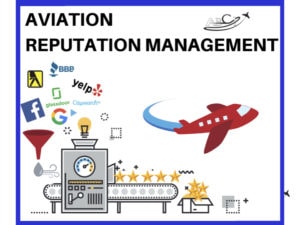 So, anyway, if you are interested in doing reputation management, check it out on our website and let’s talk about your situation and see if it would be a good fit for you.
So, anyway, if you are interested in doing reputation management, check it out on our website and let’s talk about your situation and see if it would be a good fit for you.
John Williams: Definitely.
Paula Williams: So, thank you for joining us and have a great day.
John Williams: See you next time.
Podcast: Play in new window | Download
Subscribe: Spotify | Amazon Music | RSS


